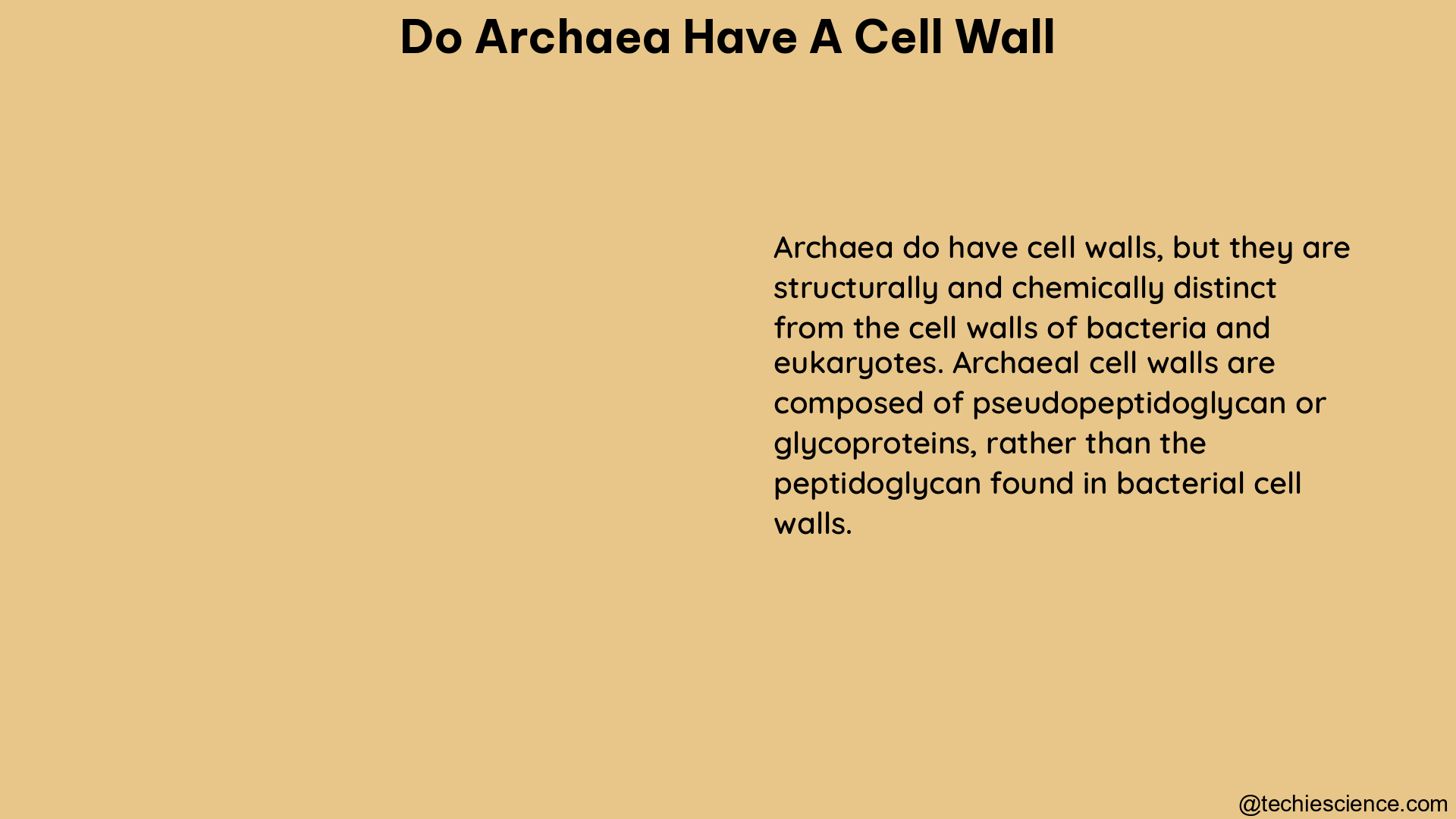Archaea, the third domain of life, are a unique group of microorganisms that have fascinated scientists for decades. Unlike bacteria, which are the most well-known prokaryotes, archaea possess several distinct features that set them apart. One of the key differences between archaea and bacteria is the composition of their cell walls. In this comprehensive blog post, we will delve into the intricacies of the archaeal cell wall, exploring its unique characteristics and the role it plays in the survival and adaptation of these remarkable organisms.
The Composition of the Archaeal Cell Wall
Archaea, like other living organisms, possess a semi-rigid cell wall that serves as a protective barrier against the external environment. However, the cell walls of archaea are remarkably different from those of bacteria in their chemical composition and structural organization.
Absence of Peptidoglycan
One of the defining features of the archaeal cell wall is the absence of peptidoglycan, a key component of bacterial cell walls. Peptidoglycan is a complex polymer composed of N-acetylglucosamine and N-acetylmuramic acid, which are cross-linked by short peptide chains. This unique structure provides bacterial cells with structural integrity and protection against osmotic stress.
In contrast, the cell walls of archaea do not contain peptidoglycan. Instead, they are composed of a variety of other macromolecules, such as:
-
S-layers: These are surface-layer proteins that form a regular, crystalline lattice structure around the outside of the archaeal cell. S-layers are the primary structural component of the archaeal cell wall and are found in the majority of archaeal species.
-
Pseudopeptidoglycan: While most archaea lack peptidoglycan, a small group of archaea known as methanogens do possess a similar structure called pseudopeptidoglycan. This molecule is similar in structure to peptidoglycan but lacks certain key components, such as amino acids and N-acetylmuramic acid.
-
Polysaccharides and Glycoproteins: Some archaea also produce additional cell wall components, such as polysaccharides or glycoproteins, which may provide additional protection or play a role in cell-cell interactions.
Diversity in Cell Wall Composition
The specific composition of the archaeal cell wall can vary significantly between different species and even within the same species, depending on the environmental conditions. This diversity in cell wall composition is thought to be a key adaptation that allows archaea to thrive in a wide range of extreme environments, such as high temperatures, high salinity, or low pH.
The Functional Significance of the Archaeal Cell Wall

The unique composition of the archaeal cell wall serves several important functions that contribute to the survival and adaptation of these organisms.
Structural Integrity and Protection
The semi-rigid cell wall provides structural integrity to the archaeal cell, protecting it from osmotic stress and other environmental pressures. The S-layer, in particular, is believed to play a crucial role in maintaining the shape and integrity of the cell, as well as shielding it from mechanical and chemical stresses.
Resistance to Environmental Stressors
The absence of peptidoglycan in the archaeal cell wall is thought to be an adaptation to the extreme environments in which many archaea thrive. Peptidoglycan is susceptible to degradation by certain enzymes, such as lysozyme, which can compromise the structural integrity of the cell wall. The alternative cell wall components found in archaea, such as pseudopeptidoglycan and S-layers, are believed to be more resistant to environmental stressors, such as high temperatures, acidity, and high salinity.
Cell-Cell Interactions
In addition to providing structural support and protection, the archaeal cell wall may also play a role in cell-cell interactions. Some archaea produce polysaccharides or glycoproteins as part of their cell wall, which can facilitate adhesion to surfaces or other cells, enabling the formation of biofilms or other types of microbial communities.
The Diversity of Archaeal Cell Walls
The diversity of archaeal cell wall compositions is a reflection of the remarkable adaptability and versatility of these organisms. Different archaeal species have evolved unique cell wall structures to thrive in a wide range of environmental conditions, from the scorching heat of hydrothermal vents to the frigid waters of the Arctic.
Methanogenic Archaea
As mentioned earlier, the methanogenic archaea, a group of archaea that produce methane as a byproduct of their metabolism, are the only known archaea to possess a cell wall containing pseudopeptidoglycan. This structural feature is thought to provide additional strength and rigidity to the cell wall, which may be necessary for the high-pressure environments in which many methanogens live.
Halophilic Archaea
Halophilic archaea, which thrive in high-salt environments, often have cell walls composed of glycoproteins or polysaccharides. These molecules are believed to help the cells maintain their structural integrity and osmotic balance in the face of the high salt concentrations found in their habitats.
Thermophilic Archaea
Archaea that live in high-temperature environments, such as hot springs or deep-sea hydrothermal vents, often have cell walls composed of S-layers that are highly resistant to heat and other environmental stressors. The S-layers in these thermophilic archaea are typically made up of proteins that are more thermostable than those found in mesophilic (moderate-temperature) archaea.
Conclusion
In conclusion, the cell walls of archaea are a fascinating and diverse aspect of these remarkable microorganisms. While they share some similarities with bacterial cell walls, the unique composition and structural features of archaeal cell walls reflect the remarkable adaptability and evolutionary success of this domain of life. By understanding the intricacies of the archaeal cell wall, we can gain valuable insights into the strategies that these organisms have developed to thrive in some of the most extreme environments on Earth.
References:
- Archaea: The Third Domain of Life
- Cell Walls of Archaea
- The Unique Cell Wall of Archaea
- Do Archaea Cells Have a Cell Wall?
Hi..I am Tanu Rapria, I have completed my Master’s in Biotechnology. I always like to explore new areas in the field of Biotechnology.
Apart from this, I like to read, travel and photography.